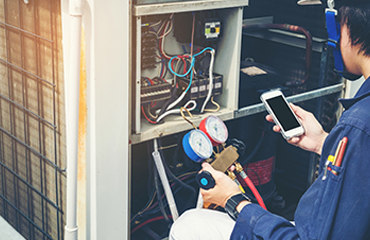Air Balancing
Air Balancing ensures optimal airflow distribution in HVAC systems, achieving desired air changes and pressure differentials. It optimizes system performance, energy efficiency, and indoor air quality. Critical in industries like pharmaceuticals, cleanrooms, and healthcare. Ensures a controlled environment’s stability and safety.

Purpose
Air balancing ensures that the airflow in a controlled environment, such as a cleanroom or laboratory, is properly distributed and balanced to meet the required standards for cleanliness, safety, and product quality.
How it's done
- Airflow measurement: Measuring airflow rates and velocities in various areas of the system.
- Adjusting dampers and fans: Adjusting dampers and fan speeds to achieve the desired airflow rates and pressures.
- Verification: Verifying that the airflow meets the required standards and specifications.
Benefits:
- Ensures product quality: Maintains a controlled environment that protects products from contamination.
- Optimizes system performance: Ensures that the HVAC system operates efficiently and effectively.
- Reduces energy consumption: Proper air balancing can reduce energy consumption and costs.
- Compliance with regulations: Meets standards and guidelines for controlled environments.
Who performs the test:
Air balancing is typically performed by trained professionals, such as:
- HVAC specialists
- Validation engineers
- Cleanroom experts
Applications:
- Cleanrooms: Ensuring that airflow is properly balanced to maintain cleanroom classification.
- Laboratories: Maintaining controlled environments for research and testing.
- Pharmaceuticals: Ensuring that airflow meets the required standards for product manufacturing and processing.
- Biotechnology: Protecting sensitive biological materials from contamination.
By performing air balancing, facilities can ensure that their controlled environments meet the required standards for product quality, safety, and regulatory compliance.
Optimize airflow and pressure – Book your test now!
